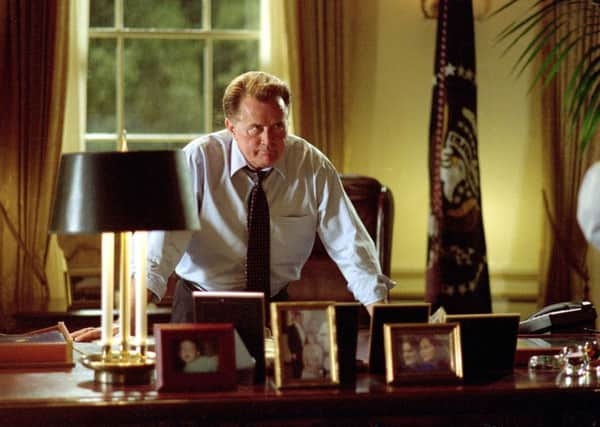Jane Bradley: Catching up with binge viewing


When my daughter was a small baby, my husband and I watched the entirety of The West Wing in the space of about three months. That’s seven series and a total of 156 episodes. About one and a half episodes a night – every night.
To be fair, we had nothing else to do. By the time the evening came, we were so exhausted from trying to coax a tiny child – who regarded (and still regards) sleeping as a waste of time when you could be doing other things – to drop off, that we had no energy for anything more than slumping on the sofa under a blanket and watching TV.
Advertisement
Hide AdAdvertisement
Hide AdA decade behind the curve, we thought it was the perfect opportunity to catch up on something we had never previously had the time or patience to begin: The West Wing. It was our first proper virtual box set (as opposed to one which came in an actual box) and the first time we had properly binge watched anything. It was an addiction.
In fact, the only thing that stopped us watching it faster was that we had limited data on our Wifi package – something we quickly rectified.
We became personally embroiled in the world of the White House, the staffers who inhabited the West Wing itself and felt like we lived on Capitol Hill. Devoid of much other social life at that time, Josh, CJ, Toby and even nerdy, sarky Will – for whom I developed an incomprehensible crush –became my friends. And when the final series eventually ended, I was devastated. I actually missed them.
My husband and I are not alone. Recent research from Netflix found that when viewers are focused on finishing a series, they watch more than two hours a day to complete a season. It is quite a commitment.
Netflix examined global viewing of more than 100 TV series across more than 190 countries and, the analysis found, the most popular series to binge watch were things like Breaking Bad, The Fall and The Killing. People gobble them up in two-episode-a-night chunks. However, perhaps surprisingly, lighter productions, such as Arrested Development – or Aussie mockumentary Summer Heights High – are watched more slowly.
In Britain, cult sci-fi show The 4400 was reportedly watched from start to finish in just four days by some hardcore bingers – two hours and 30 minutes of TV watching per day.
People like their misery and death in large servings, it seems.
Box sets are a big treat, a delicious helping of something indulgent. But unlike most indulgent things, it is not actually that bad of you. It isn’t physically unhealthy, like chocolate or ice cream; it doesn’t cause lung cancer or affect your heart.
Advertisement
Hide AdAdvertisement
Hide AdOf course, if watching TV was literally all you ever did, it would be less than ideal, contributing to obesity, yada yada. But in the big scheme of things, binge watching box sets is the one pleasure which can be enjoyed fairly guilt free.
On the other hand, I actually really like weekly TV. I enjoy looking forward to catching up with my favourite programme on a certain night.
These days, there are few things I watch live, but there are some: The Great British Bake Off, for one. Perhaps it is the competition element and the risk of finding out who has been kicked out the day after (or in my case, the day before, making sure I don’t inadvertently spill the beans to myself by flicking through the embargoed Press Association news wires 24 hours in advance of the latest episode) that makes me want to watch it in real time.
At university, there was nothing better than Wednesday evenings, when the female members (and a few of the more in-touch-with-their-feminine-side men) living in my hall of residence would gather around the one tiny TV for our weekly helping of Ally McBeal.
In addition to it being a TV programme, it became a social event – one night that we could guarantee we would all get together and watch the same thing at the same time. And in the days of live TV watching, before streaming, before on demand catch up services and when recording something on a videotape was possible, but a technical feat likely to deter even the most ardent TV viewer, it brought the country together.
What was on the box the night before was a water cooler topic: the “did you watch X last night?” a common theme of conversation. Now, we are just as likely to have spent the evening watching a box set from ten years ago that we missed the first time round as to have caught the latest episode of Eastenders.
In a way, this is sad. There is nothing like TV to bring the nation together. While my generation, who grew up in the 1980s and 90s to the backdrop of Howard’s Way, The Generation Games and Gladiators, have a shared memory of childhood, my daughter’s generation will not. Even now, she watches TV solely on demand – unable to discuss that morning’s episode of Peter Rabbit with her nursery friends, as they are equally likely to have watched Charlie and Lola; Peppa Pig or Paw Patrol on their own respective catch-up services.
Now, a few years down the line after our first go at it, we’re actually contemplating beginning the West Wing all over again. We’ll get more out of it the second time around, we keep telling ourselves. It will be interesting to observe the relevance of the political storylines set against the modern political landscape.
I’m just looking forward to being reunited with my old friends on the Hill.